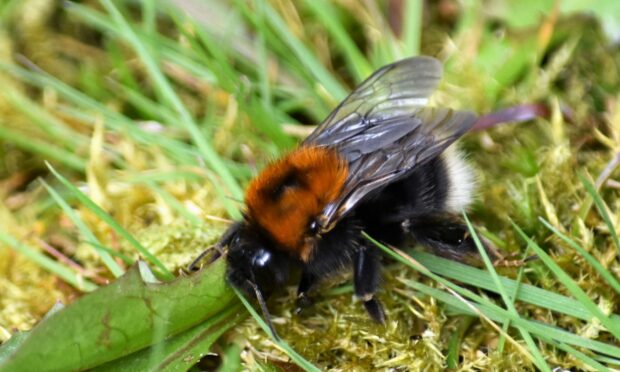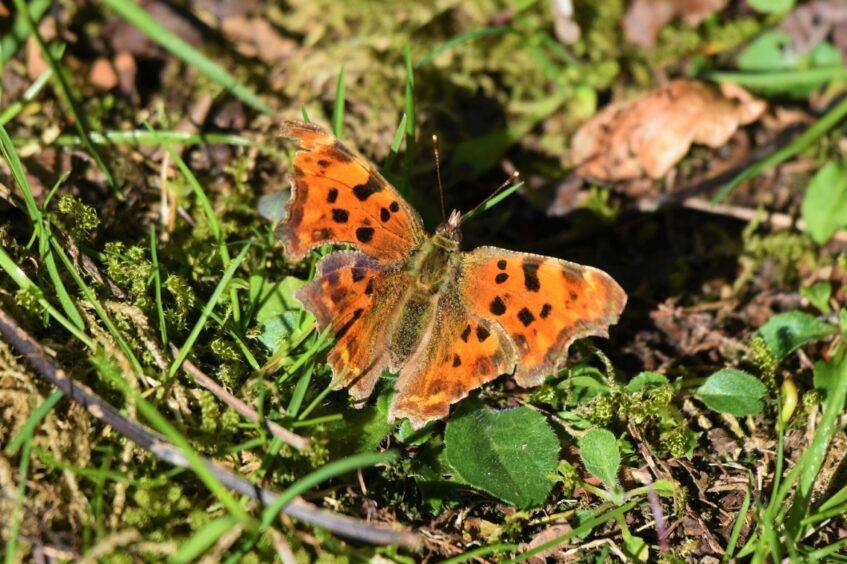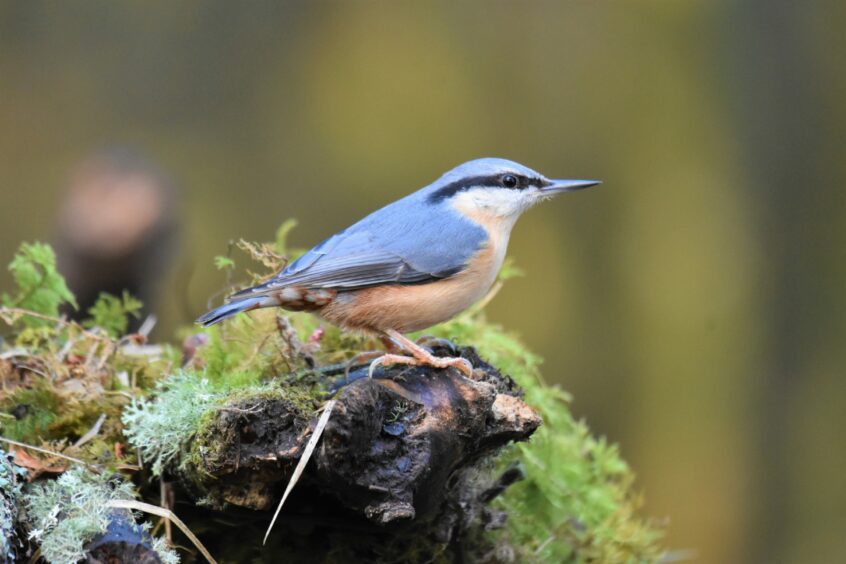I always enjoy sitting in the garden in spring because wildlife soon becomes habituated to my presence, enabling the close and easy observation of a diverse array of creatures.
The most recent contemplative session was particularly productive because I glimpsed three species which would not have occurred in the garden only 20 or so years ago.
The first was a tree bumblebee, which buzzed low over the garden lawn.
It is a distinctive bee – with a furry warm-brown back and a black abdomen, tipped with white.
A coloniser from the Continent, the first tree bumblebees were recorded in England in 2001 and by 2012 they had reached Scotland.
Now, they are common in east central Scotland, spreading up into Aberdeenshire and along the Moray coast.
Boost to numbers
It is thought they pose no threat to existing native bumblebees, with their presence helping to boost numbers of dwindling and valuable pollinators.
Tree bumblebees nested in a crevice in my neighbour’s garage last year.
She was understandably anxious about the nest, but I soon put her mind at rest, for they are not aggressive bees and have a short season, with the nests usually falling quiet by July when the cycle of life has been completed.
Not long after my tree bumblebee sighting, a comma butterfly flickered past on orange-flashed wings.
It settled on the grass and pulled together its scalloped wings into an upright position, transforming its appearance so that it resembled a well-camouflaged dark, crinkled leaf.
Camera in hand, I rose cautiously from my seat to try and snap some photographs, but this comma had razor-sharp senses, and quickly took to the air and breezily fluttered over the garden fence.
New arrivals
Commas are new arrivals to Scotland, and I spotted my first one in the garden about four years ago.
They have since become annual visitors, although are never as frequent as red admirals or small tortoiseshells.
Once common in England and Wales, commas previously suffered major declines and became restricted in their range.
However, in more recent times they have spread their wings once more.
I had only just sat back down after my failed photo attempt when the song of a nuthatch pierced the air, a wonderful flowing repertoire of ringing and whistling notes.
The nuthatch is slightly larger than a great tit and is similar in appearance to a small dumpy woodpecker.
Like the tree bumblebee and comma, nuthatches have only recently colonised Scotland from England in the last few decades.
I scrutinised the trees that fringed the garden and soon glimpsed this grey and buff-plumaged bird as it crawled along a branch.
On observing it, I wondered what other new creatures would brighten-up my garden if one were to fast-forward 20 years.
Nature never stands still, but it is nonetheless worrying if the main driver for such change is human-induced climate change.
Although many of these new arrivals are benign in their impact and are welcome, they do carry a powerful warning about the impact our activities have upon our precious environment.












